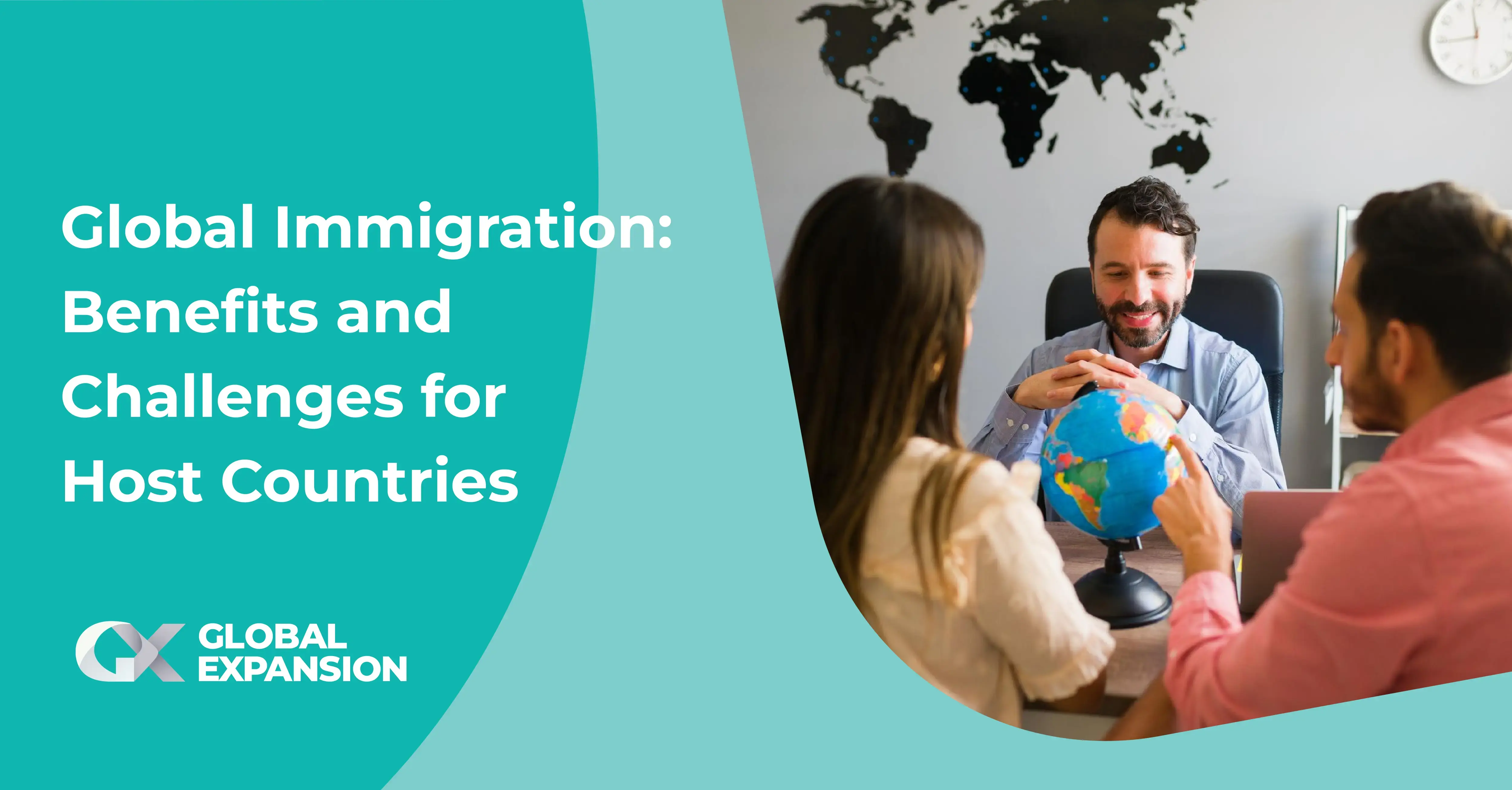What is Immigration and How Does the US Immigration System Work?

The migration of citizens across borders to settle in a foreign country is a story of desire, determination, and the search for better opportunities.
However, it includes legal complications, political debates, and essential background details.
Learning specific facts about immigration can help you easily understand what immigration is and how it works.
We will look at the importance of immigration, its historical roots, and the different classifications and legal frameworks that underpin it.
What is Immigration?
Immigration is the process by which people become permanent residents or citizens of other countries. Historically, immigration has provided significant social, economic, and cultural benefits to governments.
It is the relocation of individuals to a nation where they are not citizens to settle permanently. Immigration might include people looking for a job, reconciling with family, or fleeing violence or persecution.
But knowing what is immigration is not enough; the immigrant experience can be extensive and varied. Many current states are distinguished by a diverse range of cultures and ethnicities developed from prior eras of immigration.
If you are considering moving or hiring abroad, then Global HR services can assist you in finding the best international talent and roles.
What is Immigration: Its Importance
The importance of immigration varies depending on the countries' economic and social structures. Migrants offer new skills, views, and traditions, all of which may foster advancement and innovation. Furthermore, they contribute to the taxation system, which helps to solve labor gaps and boost income.
Critical Factors Include:
- Migration is critical in minimizing the effects of population decline in some countries by increasing labor force participation and maintaining social security systems.
- immigrants enhance civilizations with their different cultures, languages, and cuisines, resulting in dynamic cultural mosaics.
- Immigrants regularly fill labor shortages, contribute to development, and start businesses that promote economic growth.
What is Immigration: Different Categories
Immigration is not a one-size-fits-all process. Countries categorize immigrants according to their motivations for entering the country.
1. Economic Immigrants
This is the type of immigrants that individuals seek jobs for and contribute to the labor force of that country. Migrants may arrive with work permits or permanent residence options to resume their career journey.
2. Family Immigrants
One of the most common reasons for migrating to another nation is to reunite family members. In this family immigration visa process;- people can sponsor spouses, children, and parents to accompany them to their new country.
3. Refugees and Asylum Seekers
The people who "flee persecution or conflict" in their native countries and seek refuge in another country. Their claims are being evaluated under international law.
4. Student Immigration
International students promote intellectual interchange and cultural variety. They seek visas to continue their higher study in a different nation. One of the most common visas issued in many countries is a student visa.
5. US Citizenship
To score US citizenship by naturalization, you have to have held a green card for five years. Now, there might be some exceptions in play - like people from the United States military who've served during times of war or declared hostilities.
Diversity Visa Programme
The "Immigration Act of 1990" implemented the Diversity Visa Program, which provides a channel for immigrants from nations with "limited rates of migration to the United States." Through a computer-generated lottery process; over 55 thousand visas are randomly distributed to individuals from countries that have had fewer than fifty thousand residents migrate to the United States in the previous five years.
Eligibility of the Diversity Visa:
To be eligible for a diversity visa; applicants from qualified countries must have completed high school (or its equivalent) or worked in a vocation requiring at least two years of training or experience within the previous five years. Spouses and minor unmarried children of the primary applicant may also participate as derivatives.
How Does the Immigration System Work?
What is Immigration Procedures: From Visa Applications to Naturalization;
The immigration process is time-consuming and requires adequate documents. In any event, if your application is refused, it will take time to begin with the new procedure.
The immigration process differs based on the category and the unique country's requirements. Here's a summary of the process for applying for citizenship in the USA.
Step:1- Visa Application
Visa application filing is the initial step for moving forward to obtain the temporary permit. It allows individuals to engage in specific activities such as work, education, or family reunification. Each type of visa has its own requirements and application process that must be understood for a successful application.
Step:2- Documents Submission
Applicants must provide supporting documentation, such as evidence of funds, education credentials, and medical records based on the visa type.
Step:3- Background Verification
Background checks and security clearances are standard procedures for ensuring public safety.
Step:4- Biometric
Immigration officials can request interviews and acquire biometric data, including fingerprints and photographs.
Step:5- Visa Approval
Once the applicant is accepted and given approval, they obtain a visa that allows them to enter the nation.
Step:6- Citizenship for Work
Depending on the type of visa and national legislation, immigrants have the opportunity to pursue permanent residency and eventual citizenship. For approval, immigrants are required to meet residence criteria, pass exams, and integrate into society.
The immigration procedure can be complicated and time-consuming. Seeking advice from immigration law experts is strongly advised.
The argument about what is immigration is going to come to an end with the notion that before moving, one should identify the realities of what is immigration; because each country's visa procedure, terms, and circumstances vary.
Looking for Global HR services?
Global Expansion has over 20 years of experience in hiring, onboarding, and managing international talent.
Contact our experienced team to learn how a Global Employer of Record (EOR) can transform your expansion strategy.
Subscribe to our blog
Receive the latest GX blog posts and updates in your inbox.






